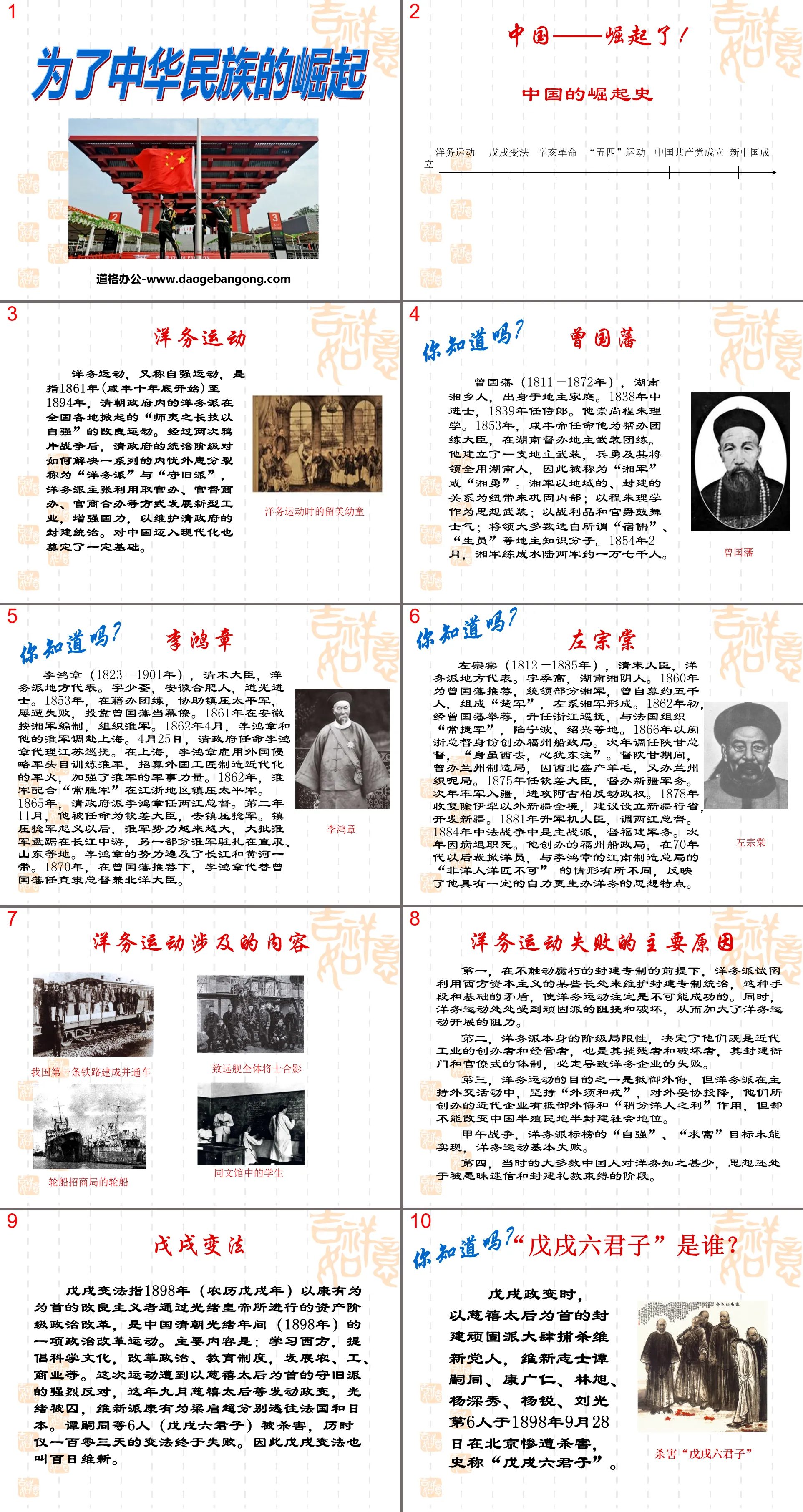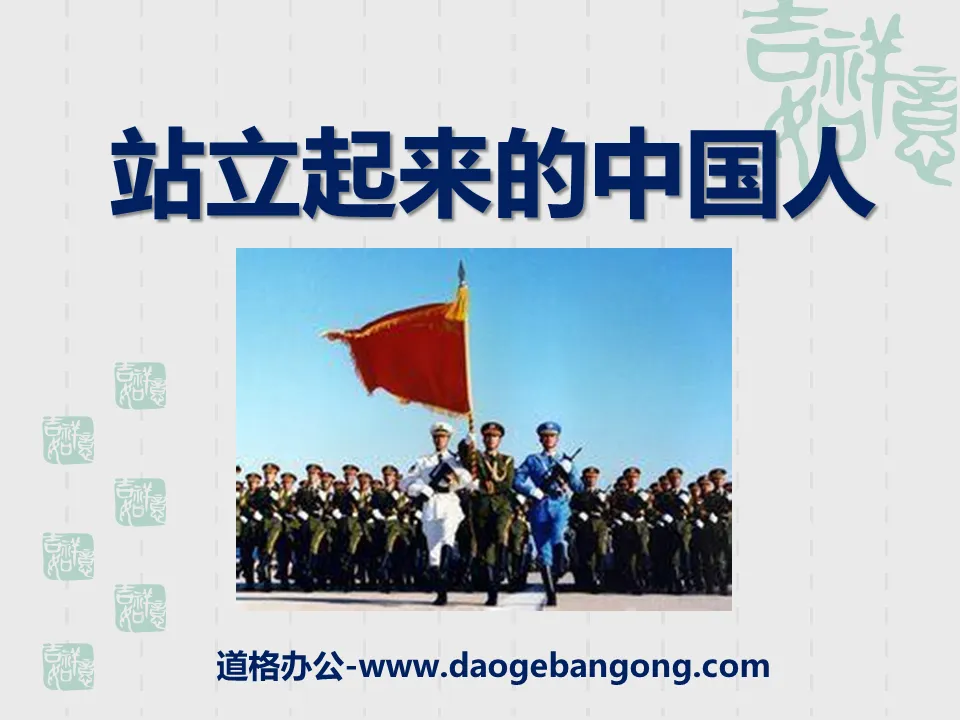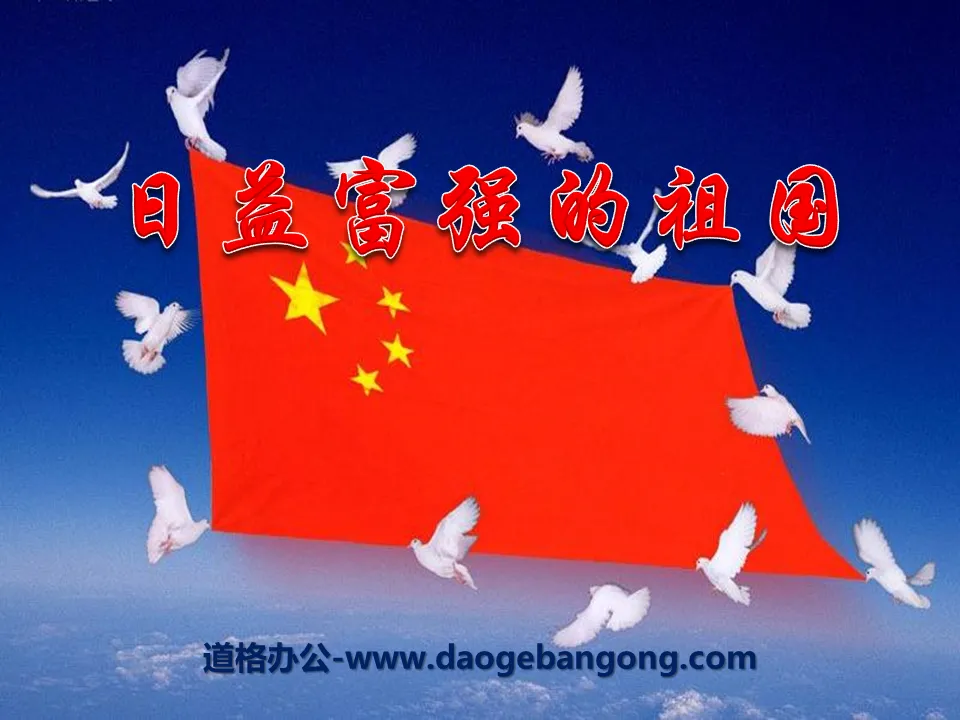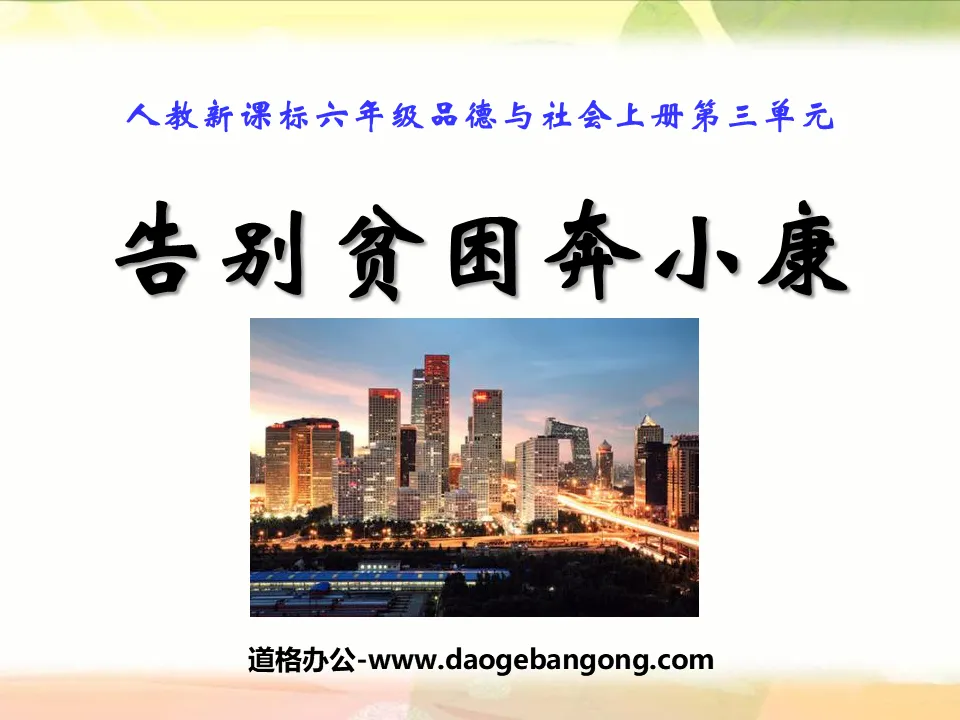
| Category | Format | Size |
|---|---|---|
| People's Education Edition Sixth Grade Society Volume 1 | pptx | 6 MB |
Description
"For the Rise of the Chinese Nation" Unyielding Chinese PPT Courseware 4
Westernization Movement
The Westernization Movement, also known as the Self-Strengthening Movement, refers to the reform movement of "learning from the skills of the barbarians for self-improvement" launched across the country by the Westernization faction within the Qing government from 1861 (beginning at the end of the 10th year of Xianfeng's reign) to 1894. After the two Opium Wars, the ruling class of the Qing government was divided between the "Westernizationists" and the "Conservatives" on how to solve a series of internal and external troubles. The Westernizationists advocated the use of government-run, government-supervised and commercial-run, government-business joint ventures, etc. Develop new industries and enhance national strength to maintain the feudal rule of the Qing government. It also laid a certain foundation for China to enter modernization.
do you know?
Zeng Guofan (1811-1872), a native of Xiangxiang, Hunan, was born into a landlord family. In 1838, he was promoted to Jinshi, and in 1839, he was appointed Minister of Public Affairs. He admired Cheng-Zhu Neo-Confucianism. In 1853, Emperor Xianfeng appointed him as the assistant minister of regiment training to supervise the landlord's armed regiment training in Hunan. He established an armed force of landlords. The soldiers and generals were all Hunanese, so they were called "Xiang Army" or "Xiang Yong". The Hunan Army used regional and feudal relations as ties to consolidate its internal affairs; it used Cheng-Zhu Neo-Confucianism as its ideological arm; it used trophies and official titles to boost morale; most of its generals were selected from the so-called "Confucians", "Shengyuan" and other landlord intellectuals. In February 1854, the Hunan Army was trained to have about 17,000 soldiers on land and water.
The main reason for the failure of the Westernization Movement
First, without touching the decadent feudal autocracy, the Westernization movement tried to use some of the advantages of Western capitalism to maintain feudal autocracy. This contradiction between means and foundation made the Westernization Movement doomed to be impossible to succeed. At the same time, the Westernization Movement was obstructed and sabotaged by diehards at every turn, thus increasing the resistance to its development.
Second, the class limitations of the Westernizationists themselves determined that they were not only the founders and operators of modern industry, but also their destroyers and destroyers. Their feudal yamen and bureaucratic system would inevitably lead to the failure of Westernization enterprises.
Third, one of the purposes of the Westernization Movement was to resist foreign aggression. However, when conducting diplomatic activities, the Westernizationists insisted on "maintaining peace with the enemy" and compromising and surrendering to foreign countries. The modern enterprises they founded had the ability to resist foreign aggression and "take advantage of the foreigners." ” effect, but it cannot change China’s semi-colonial and semi-feudal social status.
During the Sino-Japanese War of 1884-1894, the goals of "self-improvement" and "seeking wealth" advertised by the Westernizationists failed to be realized, and the Westernization Movement basically failed.
Fourth, most Chinese people at that time knew little about Westernization, and their minds were still at the stage of being bound by ignorance, superstition and feudal ethics.
Reasons for the reform
(1) The national crisis was serious at the end of the 19th century. ——Historical mission: to save the nation and survive. (The main reason is imperialist aggression, and an important reason is the corrupt rule of the Qing government)
(2) The initial development of national capitalism at the end of the 19th century (after the Sino-Japanese War of 1894-1894)—historical mission: to develop capitalism. See the reason before.
(3) The national bourgeoisie stepped onto the stage of history (symbol - the “Sign on the Bus” triggered by the signing of the Treaty of Shimonoseki in 1895)
(4) 1990s: The further development of bourgeois reform ideas. (Early reform thought: Time: after the 1860s; Reason: The introduction of Western capitalist ideas and the emergence of Chinese national capitalism. Representative figures: Wang Tao, Zheng Guanying, Feng Guifen. Advocacy: Economically develop national industry and commerce, and expand cooperation with foreign countries Commercial war; culturally, learning and spreading Western natural science; politically, advocating the implementation of a constitutional monarchy.)
Why did the Red Army go on the Long March?
The Long March Road Map of the Chinese Workers' and Peasants' Red Army in October 1934. Due to the erroneous leadership of Wang Ming's "Left" adventurism and the fact that the enemy was strong and we were weak, the fifth anti-"encirclement and suppression" war in the Central Revolutionary Base Area (also known as the Central Soviet Area) failed. , the main force of the Red Army's First Front Army (Central Red Army) began the Long March, while leaving part of the Red Army to persist in guerrilla warfare on the spot. In August, the Central Committee of the Communist Party of China and the Central Military Commission ordered the Sixth Red Army Corps to withdraw from the Soviet areas of Hunan and Jiangxi and develop guerrilla warfare in central Hunan in order to explore ways for the strategic transfer of the Central Red Army.
Flying to seize Luding Bridge
On May 25, 1935, after the first unit of the 1st Regiment of the 1st Division of the 1st Red Army, the vanguard of the Long March of the Central Red Army, successfully forcibly crossed the Dadu River at Ansunchang, Sichuan Province, Chiang Kai-shek urgently mobilized two brigades of the Sichuan Army to reinforce Luding Bridge. In order to quickly cross the Dadu River and thwart the Kuomintang army's attempt to attack the Red Army from behind, the Central Revolutionary Military Commission decided that the 1st Division and the Cadre Regiment of the 1st Red Army would continue to cross the river from Anshunchang and go north along the left bank of the Dadu River. The main force would move from Anshunchang along the right bank of the Dadu River. Going north, the two roads crossed the river and quickly captured the Luding Bridge. On the morning of the 27th, the leading force on the right, the 4th Regiment of the 2nd Division of the 1st Red Army, led by regimental commander Wang Kaixiang and political commissar Yang Chengwu, set out from Anshun Field and defeated the Sichuan Army's blockade along the way. After 2 days and nights, they forcibly marched 160 kilometers and occupied it on the morning of the 29th. West bridge of Luding Bridge. Luding Bridge spans the Sichuan-Kangmao Road, with a total length of more than 100 meters and a width of 2.8 meters. It is composed of 13 iron cables and spans the turbulent Dadu River. There are cliffs on both sides. The east bridge head is connected to Luding City. The 38th Regiment of the 4th Brigade of the Sichuan Army defending the city (less than 1 battalion) had removed the wooden planks on the bridge before the arrival of the Red Army, leaving only the hanging iron cables. At 16:00 that day, 22 commandos including Liao Dazhu, commander of the 2nd company of the 4th Red Regiment, braved the intensive firepower of the Sichuan Army under the cover of the whole regiment's firepower, climbed the iron rope and charged towards the other side. When they approached the bridgehead, the Sichuan Army suddenly launched fire. After breaking the barrier, the commando bravely passed through the wall of fire, rushed into Luding City, and started a street battle with the Sichuan army. The follow-up troops entered the battle in time. After fierce fighting, the Red Army occupied Luding City. One part of the Sichuan Army was wiped out, and the rest fled towards the sky. At the same time, the 1st Red Division and the Cadre Regiment defeated the Sichuan Army's blockade, successfully reached Luding City, and coordinated the 4th Red Regiment's battle to seize the bridge. Then, the main force of the Central Red Army crossed the naturally dangerous Dadu River from the Luding Bridge, shattering Chiang Kai-shek's attempt to annihilate the Red Army south of the Dadu River.
Keywords: Unyielding Chinese teaching courseware, for the rise of the Chinese nation teaching courseware, People's Education Edition sixth grade moral and social PPT courseware download, sixth grade moral and social slide courseware download, unyielding Chinese PPT courseware download, for Download PPT courseware on The Rise of the Chinese Nation, in .PPT format;
For more information about the PPT courseware "Unyielding Chinese People for the Rise of the Chinese Nation", please click the "Unyielding Chinese People for the Rise of the Chinese Nation" ppt tag.
"For the Rise of the Chinese Nation" Unyielding Chinese PPT Courseware 5:
"For the Rise of the Chinese Nation" Unyielding Chinese PPT Courseware 5 Exploration in the Dark Faced with an increasingly declining motherland, many patriots take it as their duty to save the motherland and work hard to explore and find a way to save the country. How to save our motherland Suppose you live in that...
"For the Rise of the Chinese Nation" Unyielding Chinese PPT Courseware 3:
"For the Rise of the Chinese Nation" Unyielding Chinese PPT Courseware 3 Westernization Movement In the late Qing Dynasty, Zeng Guofan, Zuo Zongtang, Li Hongzhang and others launched a Westernization Movement to learn from the West, advocating the adoption of Western production technology and the establishment of modern industry. And send overseas students...
"For the Rise of the Chinese Nation" Unyielding Chinese PPT Courseware 2:
"For the Rise of the Chinese Nation" The Unyielding Chinese PPT Courseware 2 Introduction to the Current Situation: The Sino-Japanese War of 1895 ended with the defeat of the Qing government. A patriot drew a "Current Situation Map" of China's territory. Published in Shanghai in the 29th year of the reign of Emperor Guangxu of the Qing Dynasty (1903)..
File Info
Update Time: 2024-07-05
This template belongs to Morality and Society People's Education Edition Sixth Grade Society Volume 1 industry PPT template
"For the Rise of the Chinese Nation" Unyielding Chinese PPT Courseware 4 Simple campus recruitment activity planning plan summary enterprise and institution recruitment publicity lecture PPT template is a general PPT template for business post competition provided by the manuscript PPT, simple campus recruitment activity planning plan summary enterprise and institution recruitment promotion Lecture PPT template, you can edit and modify the text and pictures in the source file by downloading the source file. If you want more exquisite business PPT templates, you can come to grid resource. Doug resource PPT, massive PPT template slide material download, we only make high-quality PPT templates!
Tips: If you open the template and feel that it is not suitable for all your needs, you can search for related content "For the Rise of the Chinese Nation" Unyielding Chinese PPT Courseware 4 is enough.
How to use the Windows system template
Directly decompress the file and use it with office or wps
How to use the Mac system template
Directly decompress the file and use it Office or wps can be used
Related reading
For more detailed PPT-related tutorials and font tutorials, you can view: Click to see
How to create a high-quality technological sense PPT? 4 ways to share the bottom of the box
Notice
Do not download in WeChat, Zhihu, QQ, built-in browsers, please use mobile browsers to download! If you are a mobile phone user, please download it on your computer!
1. The manuscript PPT is only for study and reference, please delete it 24 hours after downloading.
2. If the resource involves your legitimate rights and interests, delete it immediately.
3. Contact information: service@daogebangong.com
"For the Rise of the Chinese Nation" Unyielding Chinese PPT Courseware 4, due to usage restrictions, it is only for personal study and reference use. For commercial use, please go to the relevant official website for authorization.
(Personal non-commercial use refers to the use of this font to complete the display of personal works, including but not limited to the design of personal papers, resumes, etc.)
Preview




















